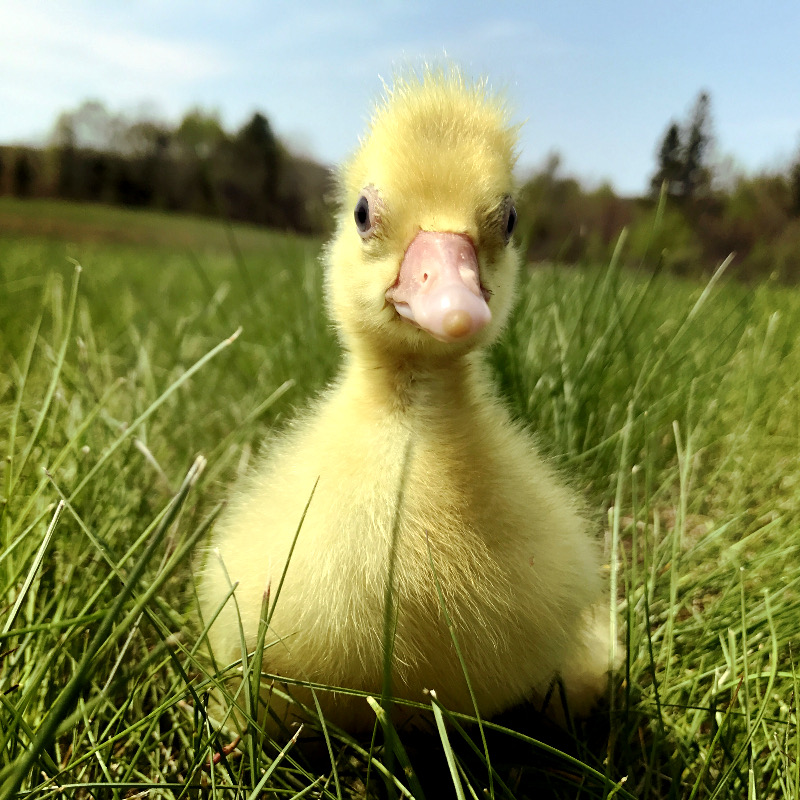
This time of year many people eagerly contemplate spring chicks, goslings and ducklings. Thoughts of fluffy little baby birds running around the spring-time barnyard keep a lot of farmers smiling in the long months of January and February.
But you might not know the best way to add new birds to your flock. The hatchery catalog is tempting, but there are also local breeders, and maybe you want to try hatching eggs yourself this year. So many options exist for the would-be poultry keeper. Here are a few of the pros and cons of some of the choices.
Hatcheries
Hatcheries are good places to get large quantities of chicks or find an unusual breed that isn’t kept by anyone in your area. A hatchery catalog often has rare and unusual breeds that cannot be found elsewhere, but they also usually have order minimums of 15 or 20 for chicks and smaller numbers for waterfowl.
Several large production hatcheries exist in the U.S., but the smaller companies often can provide healthier chicks that come from better stock. I’ve been surprised to find how few of the larger hatcheries include basics such as heat packs and scratch feed in their shipping containers. With big numbers, your chicks keep each other warm. Yet if you get a few backyard chickens, it’s helpful that the smaller companies usually have lesser minimum-order numbers and ship very healthy chicks with heat packs and scratch feed.
Any chicks sent through the mail will be at risk to various traumas associated with traveling. You’ll need to check chicks for pasty butt and spraddle leg. These issues are treatable, but sometimes chicks arrive too late to be saved. It’s a good idea to anticipate a couple of fatalities so you are prepared.
Most hatcheries let you get sexed chicks. Some do not offer this on bantam varieties. It’s very helpful for a small or urban farmer to know he or she is getting only pullets, as having more than one rooster leads to an unhappy flock.

Hatching Eggs
If you have an incubator or already have a broody hen, hatching your own eggs is truly the most rewarding way to get new poultry. If you have a rooster capable of fertilizing your hens, you can let the chickens hatch their own eggs. You can select for various qualities in your flock or just accept the random mixed breeds that appear.
You can also find a supplier of purebred, hatching eggs. Often you can do this through local bird fanciers’ groups or an enthusiast of a certain breed. Most hatcheries also offer hatching egg options.
The downside of hatching your own eggs? You’ll have no idea whether you’ll get hens or roosters. Naturally speaking, chicks are usually a 50/50 mix of males and females. This means you’ll probably get at least a rooster or two from a batch of hatched eggs.
Another problem with hatching eggs is that even the best bred won’t offer a 100 percent success rate. Fertility in chickens is usually between 80 percent and 90 percent, depending on the breed. Between this issue and the possibility of several males, it is a good idea to incubate several extra eggs and attempt to give away or harvest any extra birds.
Feed Store
The feed store for those in rural areas is the source of many spur-of-the-moment chicken purchases. If you love chickens, it’s pretty hard to leave your feed store in spring without some peeping balls of fluff. It’s a good place to pick up your chicks because you can get all of the supplies for them at the same time and also pick out your favorites from their stock. While you can sometimes special order through your local store, for breed choice you are often at the mercy of what the place happens to have in stock.
Chicks purchased at the feed store will still be at risk for travel related illnesses and need to be checked for pasty butt and spraddle leg.
Local Bird Fanciers
If your area has a bird fanciers’ group or poultry club, it’s possible to connect with someone who raises the type of poultry you want and who is willing to part with a few. This is one of the the best ways to get rare or exotic breeds, because you can find an enthusiast who carefully selects for certain traits.
Getting involved in your local poultry community is also a great way to meet fellow bird lovers and people who can help you with tips in case you run into trouble. You can search Facebook for bird fanciers’ groups or search for individuals on a classified site such as Craigslist. Additionally, national organizations and online forums are listed at the end of this post where you can meet other poultry people.
Adult Birds
There are many reasons to get poultry as chicks, not least of all how cute they are. But practically speaking, sometimes it’s smart to get an adult bird or feathered pullets. Older birds will not suffer in transportation in the same way as day-old chicks, and they are often less expensive. You do not have to worry about sexing your birds as it will be apparent when you purchase them. You can also be sure of other characteristics such as their final size and feather patterns right away.




